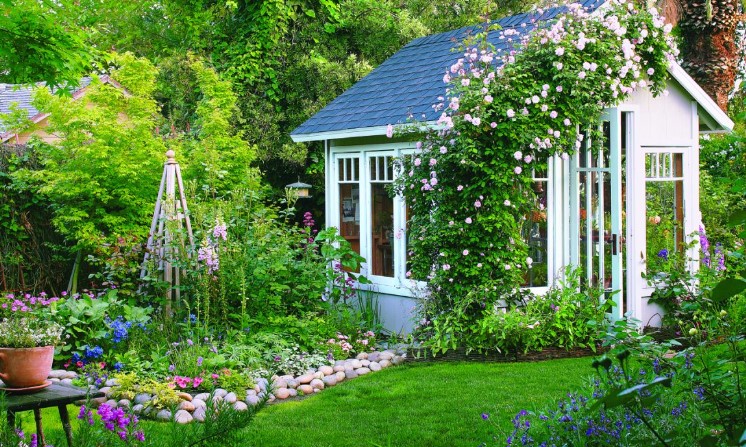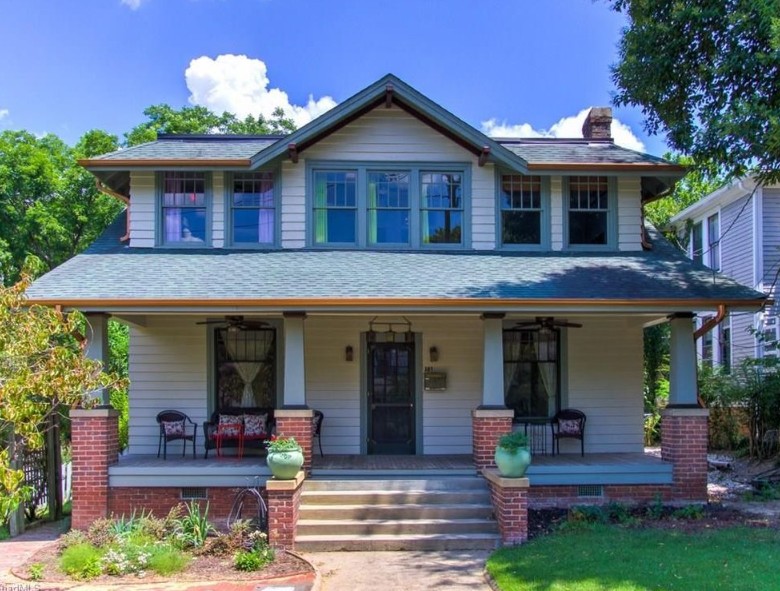Cottage Garden: A Timeless Gardening Style

Introduction to Cottage Gardens
What is a Cottage Garden?
A cottage garden is a charming, informal garden style that exudes a sense of warmth and abundance. This type of garden is characterized by its densely planted flower beds, overflowing with a variety of plants, including flowers, herbs, vegetables, and shrubs. The beauty of a cottage garden lies in its seemingly random, yet carefully curated plantings that create a natural and relaxed atmosphere.
Historical Background of Cottage Gardens
The origins of cottage gardens date back to medieval times in England, where peasants cultivated small plots around their homes. These gardens were practical and functional, providing food, medicinal herbs, and flowers for the household. Over time, the aesthetic appeal of these gardens was recognized, leading to their adoption by the upper classes and their evolution into the picturesque style we know today.
Planning Your Cottage Garden
Choosing the Right Location
Selecting the perfect spot for your cottage garden is crucial. Ideally, you want a location that receives ample sunlight, as most cottage garden plants thrive in sunny conditions. However, don’t be discouraged if you have a partially shaded area; there are plenty of shade-tolerant plants that can add charm to your garden.
Soil Preparation and Fertility
Healthy soil is the foundation of any successful garden. Start by testing your soil to determine its pH level and nutrient content. Cottage gardens typically do well in well-draining, fertile soil. You can improve your soil’s fertility by adding organic matter, such as compost or well-rotted manure.
Selecting Plants for Your Cottage Garden
Perennials and Annuals
Cottage gardens are known for their rich variety of plants. Perennials, such as roses, foxgloves, and peonies, form the backbone of the garden, providing structure and continuity year after year. Annuals like cosmos, zinnias, and marigolds add vibrant colors and fill in gaps between perennials.
Shrubs and Trees
Adding shrubs and small trees can provide height and structure to your garden. Consider planting lilacs, hydrangeas, or elderberries for their beautiful blooms and attractive foliage. Small trees like crabapples or magnolias can also enhance the vertical dimension of your garden.
Herbs and Vegetables
Incorporating herbs and vegetables into your cottage garden not only adds variety but also makes the garden more functional. Common choices include lavender, rosemary, thyme, and sage for herbs, while tomatoes, beans, and lettuces are popular vegetable options.
Design Principles of Cottage Gardens
Informal Layout
The charm of a cottage garden lies in its informal, almost whimsical design. Avoid rigid, geometric layouts in favor of meandering paths and irregularly shaped flower beds. The goal is to create a sense of natural beauty and spontaneity.
Color Schemes
When selecting plants, consider how their colors will interact. Cottage gardens often feature a mix of pastel shades, vibrant hues, and cool tones. Aim for a harmonious blend that pleases the eye without appearing too coordinated.
Plant Combinations
Combine plants with varying heights, textures, and blooming times to create visual interest throughout the seasons. Pair tall, spiky flowers like delphiniums with low-growing ground covers like creeping thyme. Mix plants with different leaf shapes and colors to add depth and complexity to your garden.
Planting Techniques
Companion Planting
Companion planting involves growing plants together that benefit each other. For example, marigolds can deter pests from tomatoes, while basil enhances the flavor of nearby vegetables. This technique can improve plant health and yield.
Succession Planting
To keep your garden looking vibrant throughout the growing season, practice succession planting. This involves planting new crops as soon as previous ones have finished. For instance, you can plant cool-season vegetables like lettuce in early spring, followed by warm-season crops like beans in summer.
Maintaining Your Cottage Garden
Watering and Irrigation
Cottage gardens require regular watering, especially during dry spells. Install a drip irrigation system or soaker hoses to provide consistent moisture to your plants. Mulching around your plants can also help retain soil moisture and reduce the need for frequent watering.
Pruning and Deadheading
Regular pruning helps maintain the shape and health of your plants. Deadheading, or removing spent flowers, encourages more blooms and prevents plants from going to seed prematurely. This simple task can keep your garden looking fresh and vibrant.
Pest and Disease Control
Monitor your garden regularly for signs of pests and diseases. Use organic methods, such as neem oil or insecticidal soap, to control common pests like aphids and spider mites. Encouraging beneficial insects, like ladybugs and lacewings, can also help keep pest populations in check.
Seasonal Care for Cottage Gardens
Spring Tasks
Spring is the time to prepare your garden for the growing season. Clean up debris, prune dead branches, and start planting early crops. Adding a layer of compost to your beds can give your plants a nutrient boost.
Summer Maintenance
During the summer, focus on watering, weeding, and deadheading. Keep an eye out for pests and diseases, and take action promptly if you notice any issues. Mulching can help conserve moisture and keep weeds at bay.
Fall Preparations
In the fall, clean up your garden by removing dead plants and leaves. Plant bulbs for spring blooms, and add a layer of mulch to protect your soil over the winter. Fall is also a good time to divide and transplant perennials.
Winter Protection
Protect your garden from harsh winter weather by covering tender plants with burlap or frost blankets. Mulching heavily around the base of plants can insulate their roots and prevent frost heaving.
Incorporating Structures and Features
Paths and Walkways
Adding paths and walkways to your cottage garden can enhance its charm and make it easier to navigate. Use natural materials like gravel, stone, or brick to create a rustic, inviting feel.
Fences and Arbors
Fences and arbors can provide structure and support for climbing plants like roses and clematis. Wooden or wrought iron designs often complement the cottage garden aesthetic beautifully.
Water Features
A small pond, fountain, or birdbath can add a soothing element to your garden. Water features attract wildlife and can create a serene focal point in your outdoor space.
Decorative Elements in Cottage Gardens
Garden Furniture
Incorporate charming garden furniture, such as wrought iron benches, wooden chairs, or rustic tables. These pieces can provide places to relax and enjoy your garden, adding both functionality and style.
Ornaments and Statues
Decorative elements like statues, birdbaths, and sundials can add personality and whimsy to your garden. Choose pieces that reflect your personal taste and complement the overall design.
Birdhouses and Feeders
Attract birds to your garden by installing birdhouses and feeders. Not only do they add a lively element to your space, but birds can also help control pests and pollinate plants.
Sustainable Practices in Cottage Gardening
Composting and Mulching
Composting kitchen scraps and garden waste can provide your plants with nutrient-rich soil amendments. Mulching with organic materials like straw or wood chips can help retain moisture, suppress weeds, and improve soil health.
Organic Pest Control
Avoid using synthetic chemicals in your garden. Instead, opt for organic pest control methods like introducing beneficial insects, using insecticidal soap, or planting pest-repellent herbs like basil and mint.
Water Conservation
Implement water-saving practices such as using rain barrels to collect rainwater, installing drip irrigation systems, and mulching to reduce evaporation. These methods can help you maintain a healthy garden while conserving water.
Creating Wildlife-Friendly Cottage Gardens
Attracting Pollinators
Planting a variety of flowers that bloom throughout the season can attract pollinators like bees, butterflies, and hummingbirds. Native plants are particularly effective at drawing in local wildlife.
Providing Shelter for Wildlife
Incorporate elements like hedges, shrubs, and rock piles to provide shelter for birds, insects, and small mammals. These features can create a habitat that supports a diverse range of wildlife.
Common Challenges in Cottage Gardening
Dealing with Weeds
Weeds can be a persistent problem in cottage gardens. Regular weeding, mulching, and using ground covers can help keep weeds under control.
Managing Overcrowding
Cottage gardens can easily become overcrowded due to their dense planting style. Regular pruning, thinning, and dividing plants can help maintain a healthy and balanced garden.
Coping with Shade and Sun
Finding the right balance of shade and sun can be challenging. Choose plants that are suited to your garden’s light conditions, and consider using shade cloth or planting shade-tolerant species in areas with less sunlight.
Inspirational Cottage Gardens Around the World
Famous Cottage Gardens
Explore renowned cottage gardens like Sissinghurst Castle Garden in England or Claude Monet’s garden in Giverny, France. These gardens can provide inspiration and ideas for your own space.
Regional Variations
Cottage gardens vary by region, with different plants and styles adapted to local climates and conditions. Research regional variations to find ideas that work best for your area.
Personalizing Your Cottage Garden
Adding Personal Touches
Infuse your garden with your personality by adding unique touches like handmade garden markers, personalized signs, or family heirlooms. These elements can make your garden feel truly your own.
Creating Themed Areas
Designate specific areas of your garden for different themes or purposes. For example, create a herb garden near your kitchen, a flower garden by your patio, or a vegetable patch in a sunny spot.
Conclusion
Creating a cottage garden is a delightful and rewarding endeavor. By following the principles and tips outlined in this guide, you can design a garden that is both beautiful and functional. Whether you’re a seasoned gardener or a beginner, a cottage garden can provide endless joy and inspiration. So, roll up your sleeves, grab your gardening tools, and start planting your very own cottage garden today!
FAQs
What are the best plants for a cottage garden?
The best plants for a cottage garden include a mix of perennials, annuals, herbs, and vegetables. Popular choices are roses, foxgloves, peonies, lavender, cosmos, and tomatoes.
How do I maintain a cottage garden?
Maintain a cottage garden by regular watering, pruning, deadheading, and monitoring for pests and diseases. Seasonal tasks like mulching, planting, and cleanup are also important.
Can I create a cottage garden in a small space?
Yes, you can create a cottage garden in a small space by using containers, vertical gardening techniques, and carefully selecting compact plant varieties.
What makes a cottage garden different from other garden styles?
Cottage gardens are characterized by their informal layout, dense plantings, and a mix of flowers, herbs, and vegetables. They emphasize a natural, relaxed aesthetic compared to more formal garden styles.
How can I make my cottage garden environmentally friendly?
Make your cottage garden environmentally friendly by using organic gardening practices, composting, conserving water, and planting native species to support local wildlife.





